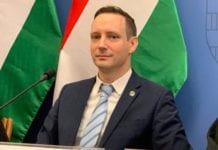By Stefan J. Bos, Chief International Correspondent BosNewsLife
BUDAPEST, HUNGARY (BosNewsLife)– Forensic analysts have exhumed what are believed to be the bodies of late Romanian dictator Nicolae Ceausescu and his wife, Elena, who were executed in 1989. It comes after relatives raised doubts that the couple was really buried in Romania’s capital Bucharest.
Witnesses said a team of pathologists and cemetery officials raised the wooden caskets of the Ceausescus. Officials took samples from the corpses and put them into plastic bags in a process lasting more than two hours, before re-burying the coffins.
Their son-in-law, Mircea Oprean, told Romanian television the investigation came after the family expressed doubts the Ceausescus were really buried in Bucharest’s Ghencea cemetery.
He said, “the corpses are being exhumed to get samples for DNA testing.” Oprean added that “they have to know if it is really them who are buried here. ” If not, he warned, the family will launch a lawsuit against the state for hiding the truth.
The couple’s three children repeatedly said they doubted their parents had actually been buried there.
BODIES EXHUMED
For years, authorities blocked their attempts to have the two bodies exhumed, but officials now say they are convinced the results will show they have nothing to hide.
The couple was executed two decades ago outside Bucharest during a revolution against Nicolae Ceausescu’s rule that killed more than 1,000 people and left thousands injured. He had ruled the country with an iron fist. Many Christians also suffered during that time. Bibles had to be smuggled into the country to avoid detection by border guards and the powerful secret service, known as the Securitate.
After a trial that reportedly lasted two hours, Romanian television footage showed how the clearly upset couple was led, hands tied, to their final destination. Romanian soldiers shot and killed them on December 25, 1989, Christmas Day, in many countries.
Fearing the tombs might be desecrated, the new authorities buried the Ceausescus at night, in Bucharest’s Ghencea cemetery.
WINTER COAT
The husband of the Ceausescus’ late daughter Zoia, Mircea Oprean, told reporters later he saw what he believed to be their bodies for the first time Wednesday. He said he recognized his father-in-law’s winter coat and added it had holes in it.
Oprean said he planned a full funeral ceremony if the tests confirmed the remains were those of his inlaws.
The head of Romania’s national institute of legal medicine, Dan Dermengiu, has warned the DNA tests could take up to six months.
He explained to reporters he hopes the DNA is not altered by water, fertilizers or acidic substances, because, “if this is the case, it will be very difficult to obtain a very precise result.”
There is still some nostalgia for the communist period and regrets the Ceausescus were executed. Often, elderly Romanians can be seen putting flowers near the small graves of what they believe are those of the Ceausescus. (Parts of this BosNewsLife News story also airs via the Voice of America (VOA) network. BosNewsLife NEWS WATCH is a regular look at key news developments, especially in (former) Communist nations, impacting the Church and/or compassionate professionals).








